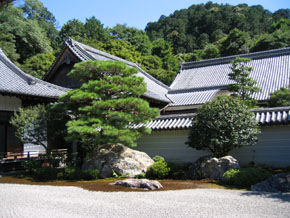Whether you are planning your Japan visit as part of a world trip or a holiday destination in itself, it is important to time your visit carefully. As well as the normal considerations such as climate and festivals, the availability and blackout periods for certain cheap air and rail passes should be borne in mind.
Climate and festivals
At any time of the year, the climate will vary widely from the mountains in the north island to the tropical islands in the south.
Spring and Autumn are considered the best times to visit Japan. Spring generally lasts from March to May when the weather is dry and skies are clear. March is usually the best time to see the famous cherry blossoms. Autumn lasts from September to November and the weather is similarly warm but not oppressive and the colors of the falling leaves are especially beautiful.
The summer can be hot and humid in Japan. The rainy season hits in the summer but does not generally affect Hokkaido which remains cooler than the rest of the country. The rainy season commences in Okinawa in early May and moves northwards up Japan. The last place to be hit is Northern Tohoku in early June. It finishes in Okinawa around the third week of June, giving way to clear hot days. The rainy season then recedes up the country, finishing in Northern Tohoku by the end of July. Hence, through a judicious choice of itinerary it is possible to visit Japan in the summer and avoid the rainy season.
The first week of May is the ‘Golden Week’; festival period and a busy holiday for Japanese people when roads and attractions can be crowded. The mid-summer O-Bon Festival, normally in mid-august (mid-july in some Japanese regions) is also a very busy time in Japan. Many Japanese Festivals also occur in the Autumn.
Taking advantage of ‘cheap’ Budget Travel options
The Seishun Juhachi (18) Kippu train pass is by far the cheapest way to travel around the country by public transport and is valid for specific periods only. These dates are from March 1st to April 10th, July 10th to September 10th and December 10th to January 10th (for 2007). If you are on a really tight budget, it may well be worth planning your trip to coincide with Seishun 18 Kippu availability.
To take full advantage of the excellent internal air passes, ensure that you know when the exclusion dates occur. Full details are in the ‘by air’ section, but the exclusion periods generally cover the Christmas period and New Year, the latter weeks of March and the middle of August.
Our trip
On our longest trip to Japan, we had to visit in summer. We avoided the start of the rainy season in Hokkaido, before using one of the flights on our air pass to fly to Okinawa as the rainy season finished there. We then tracked the end of the rainy season northward up Japan to Tokyo traveling using a combination of the Seishun 18 Kippu train pass and hitchhiking.

